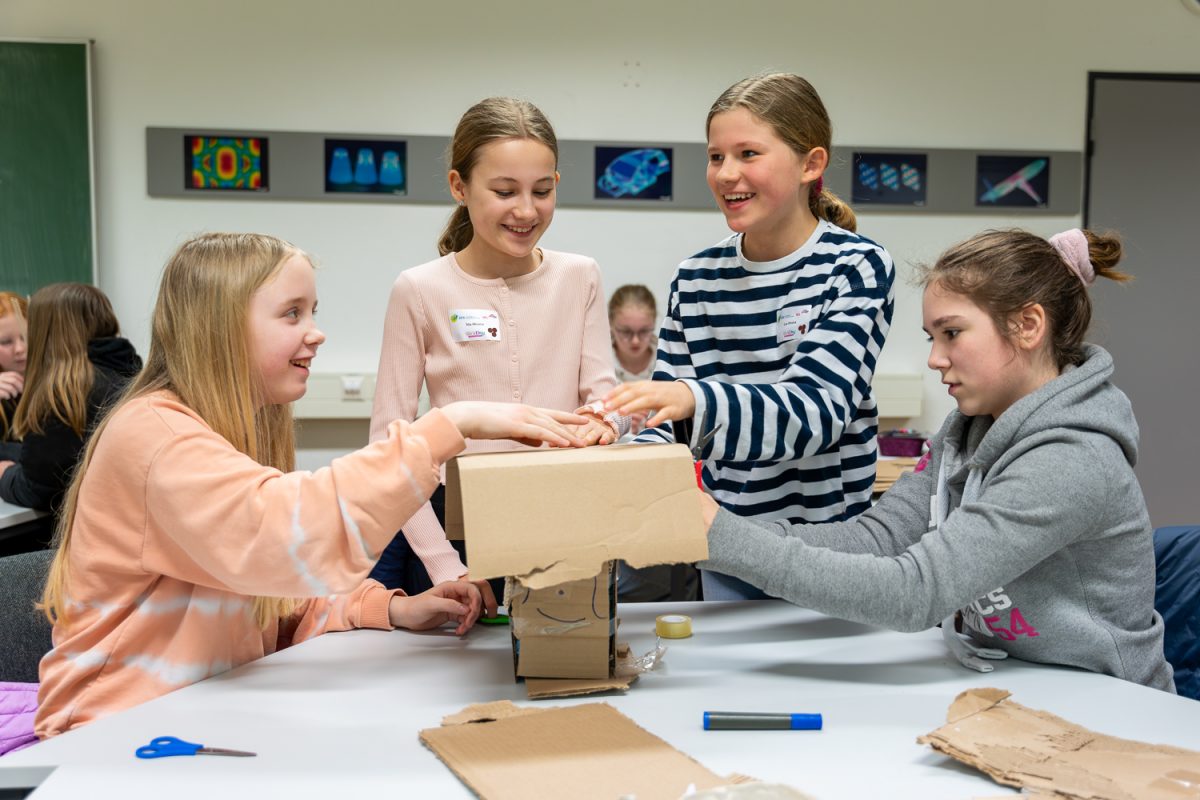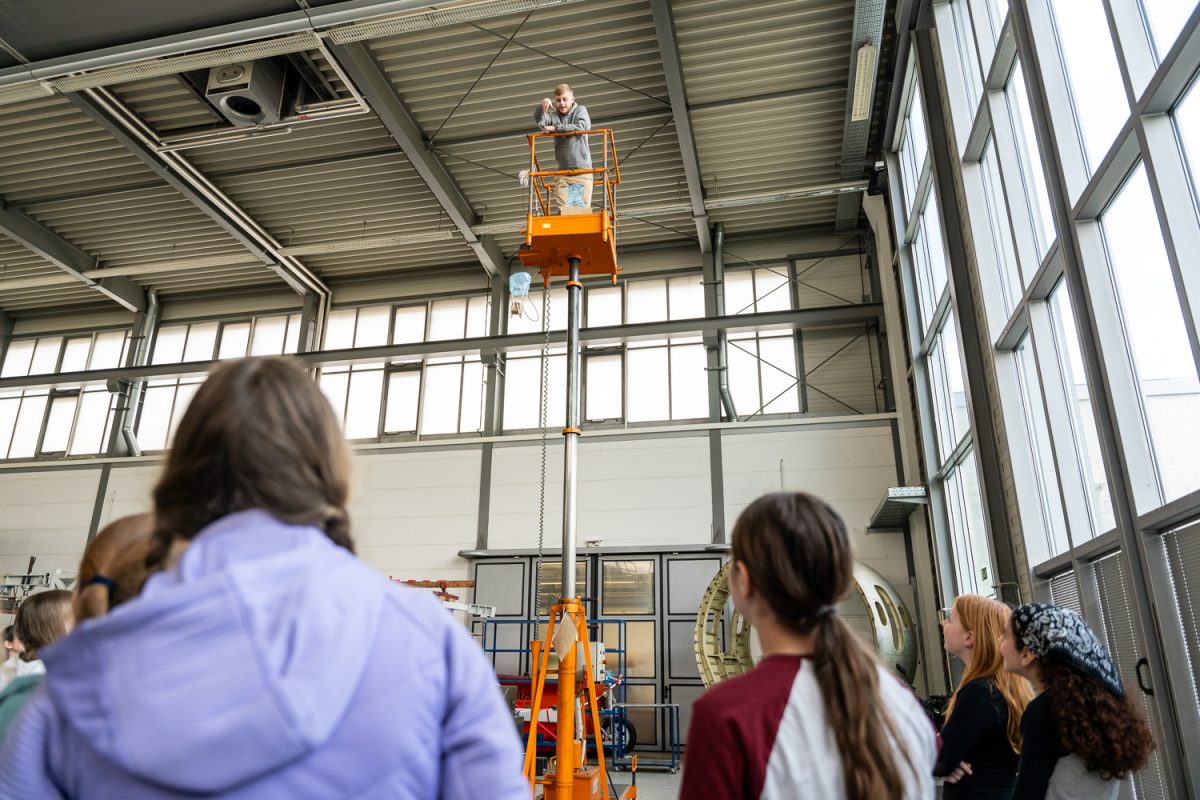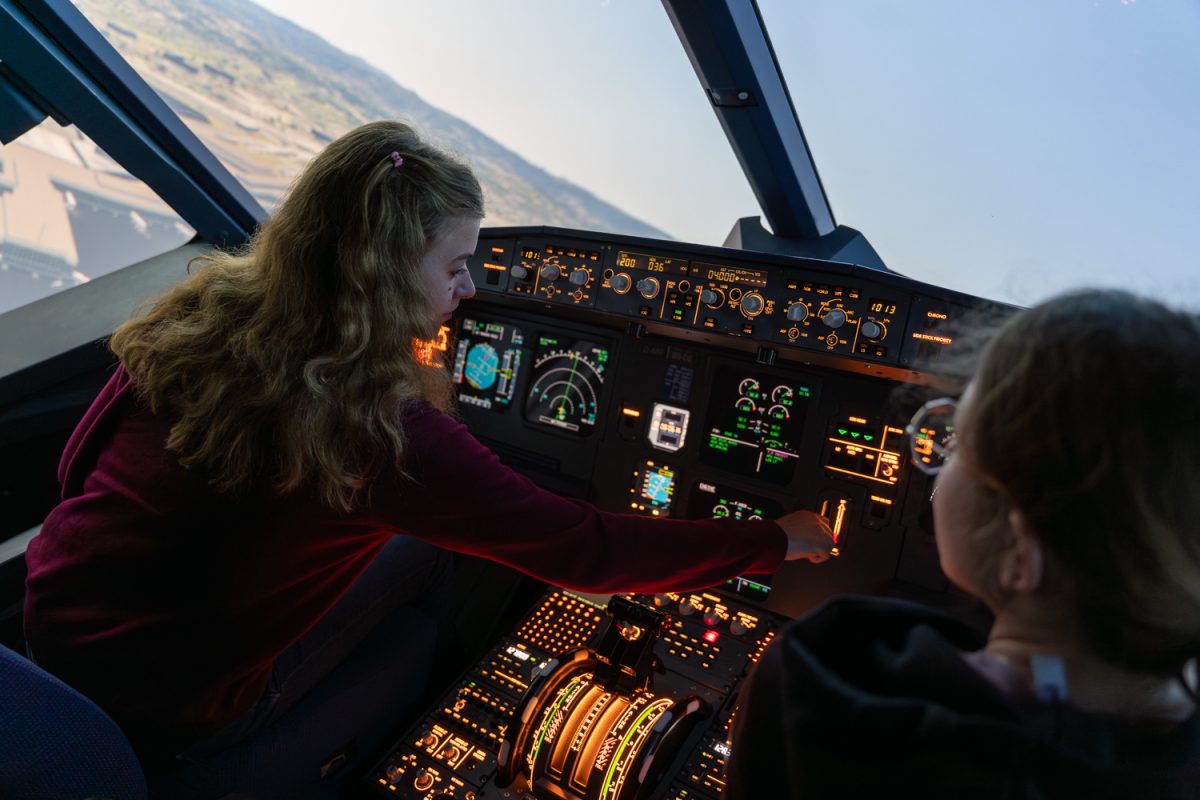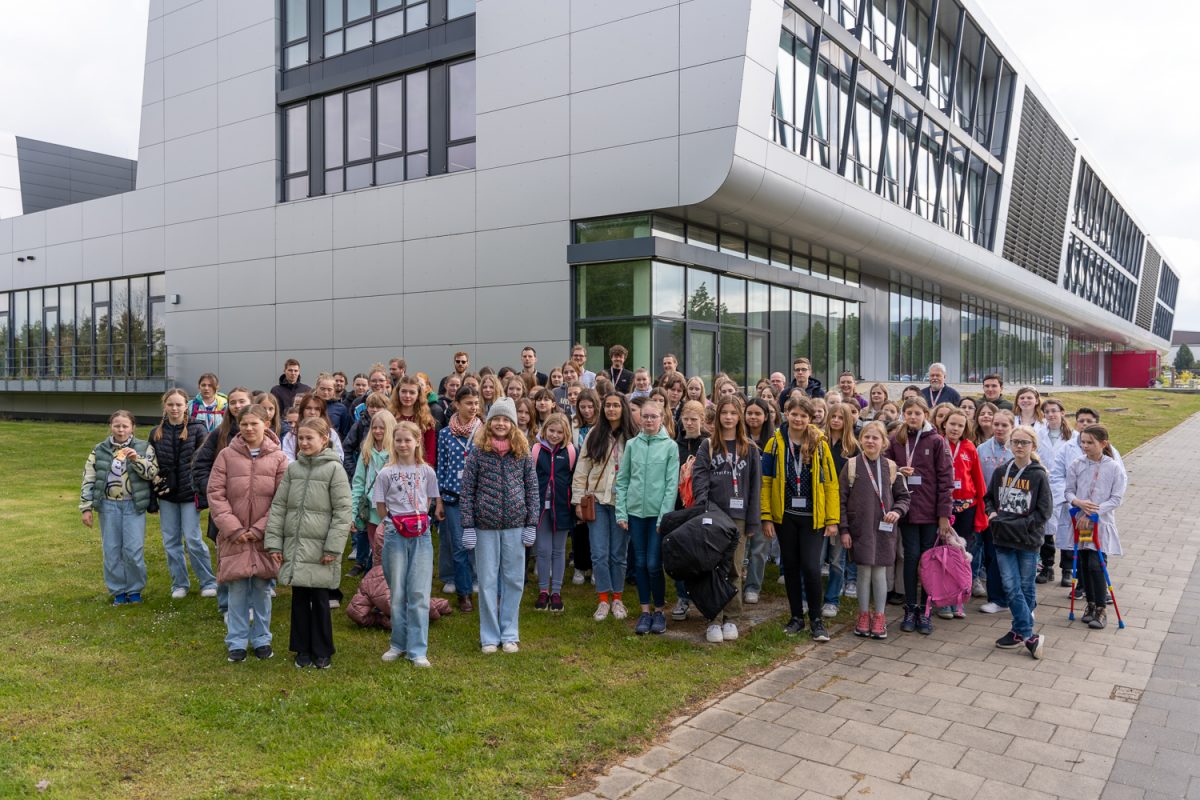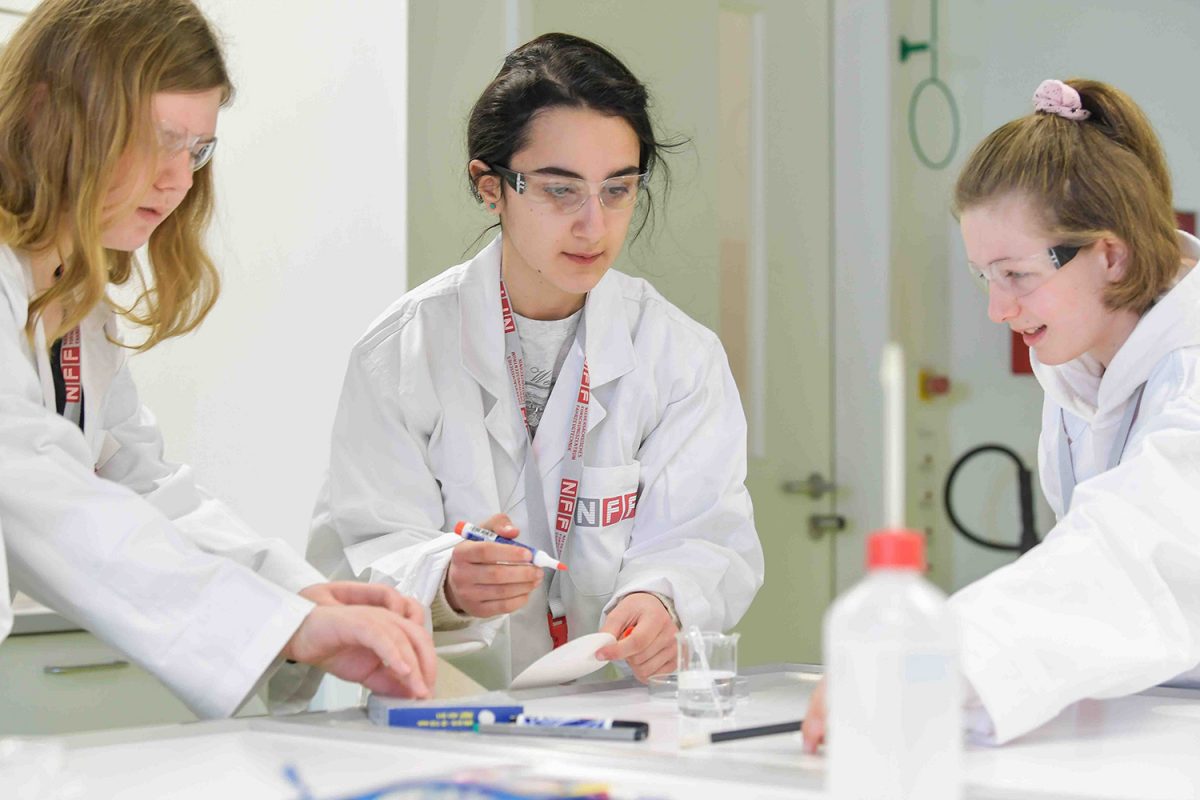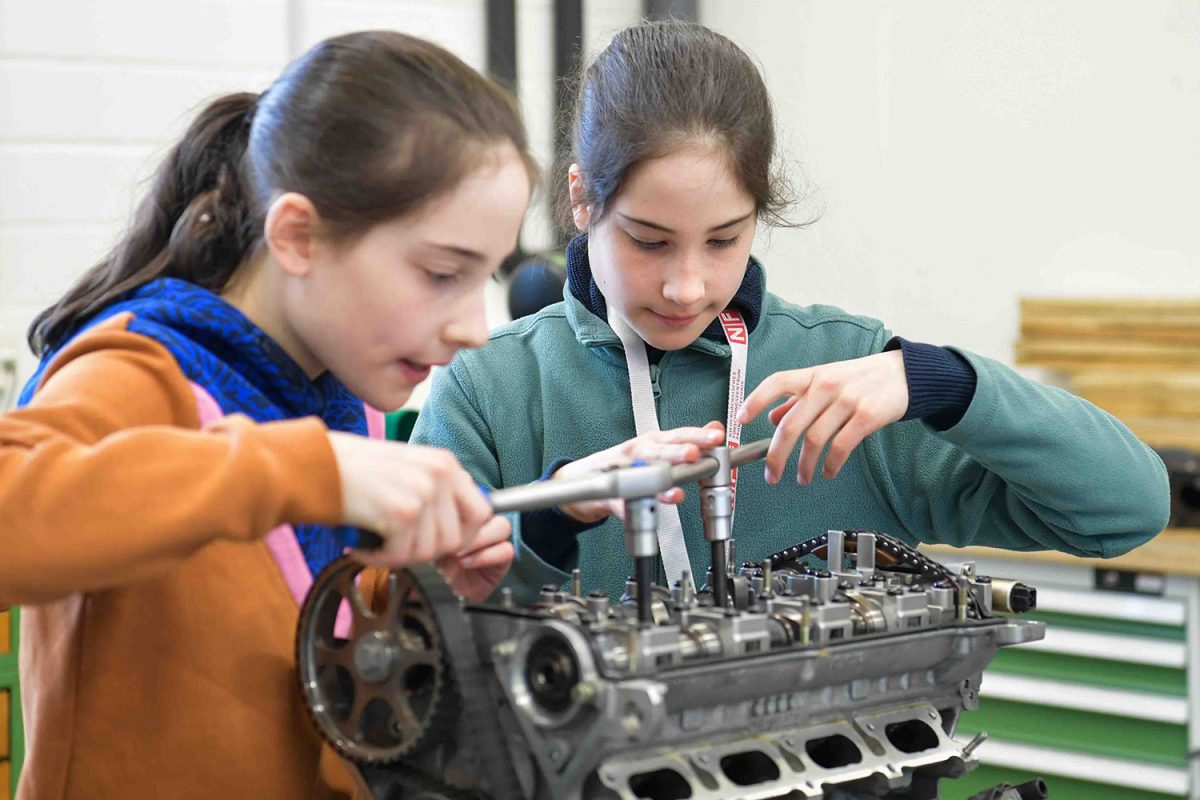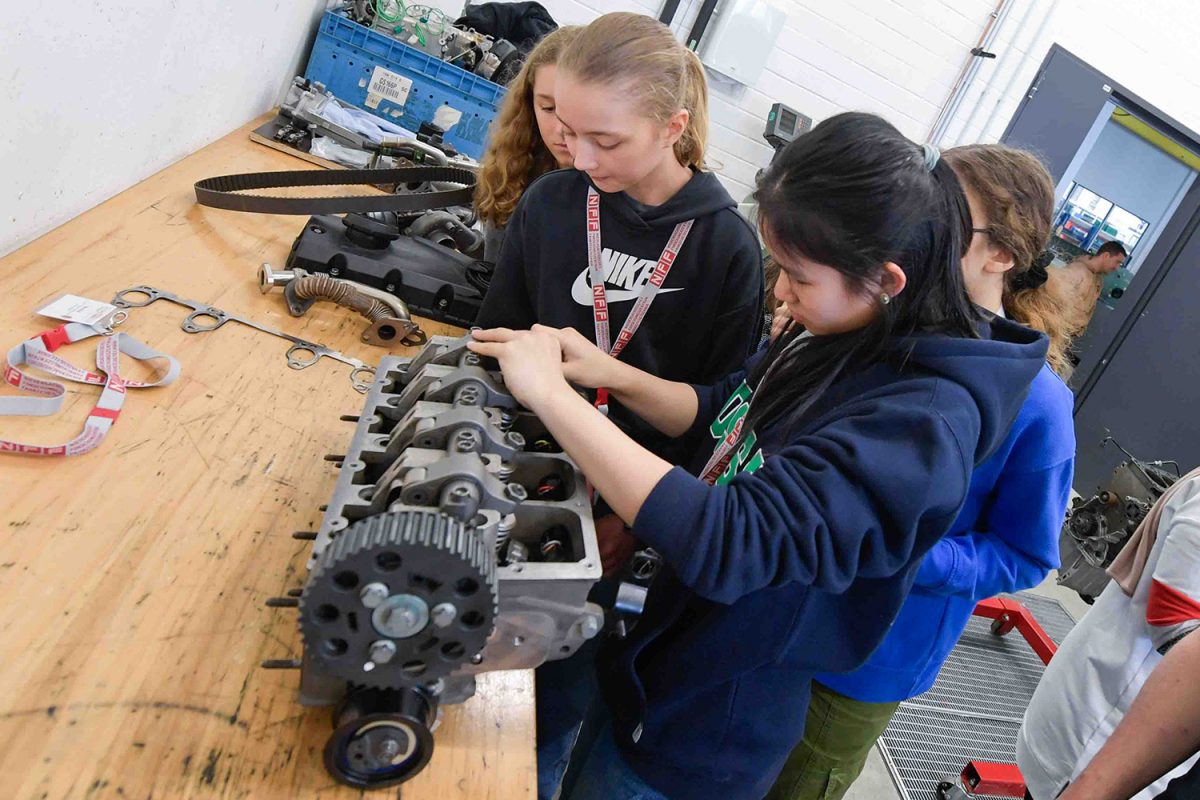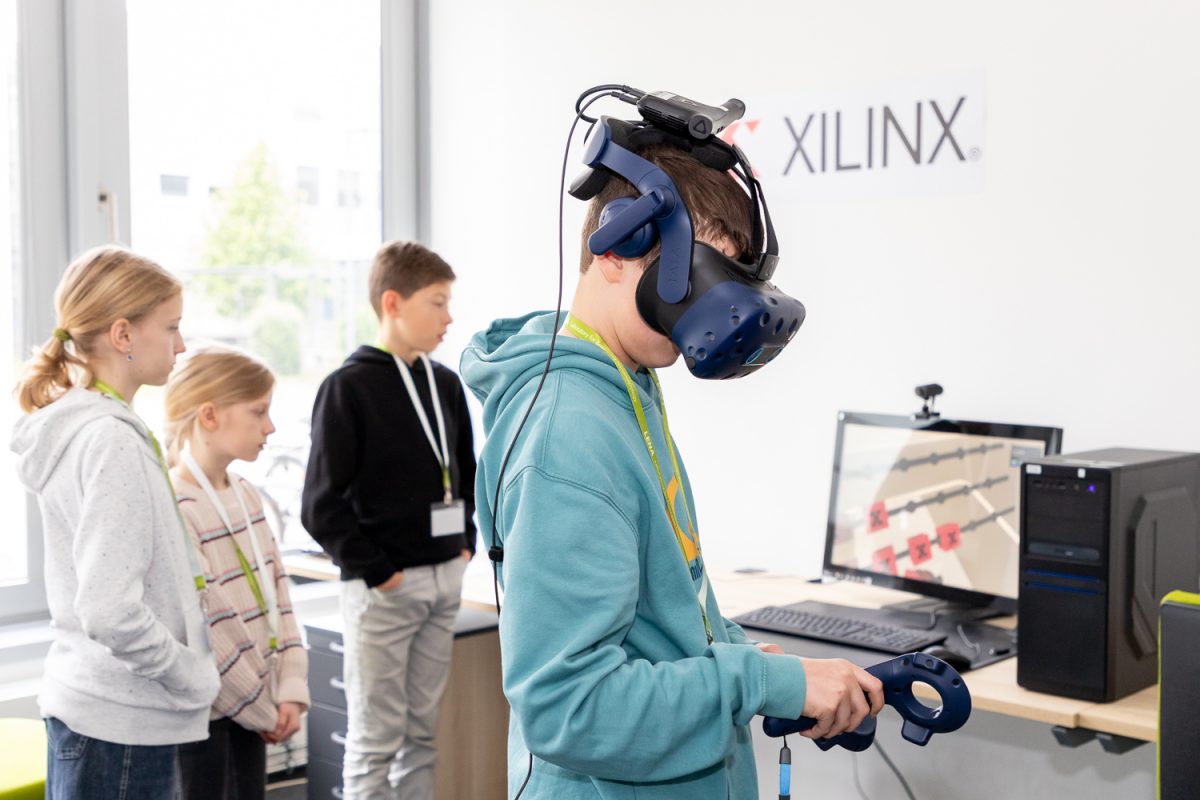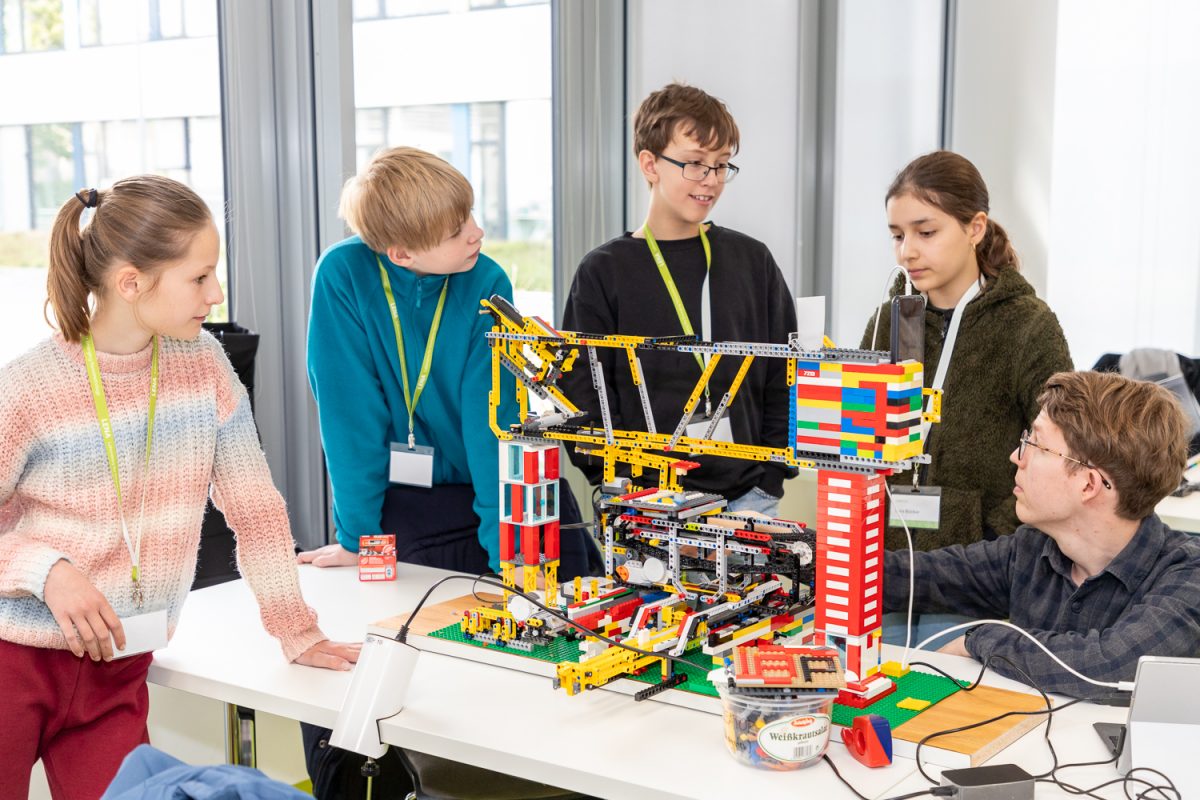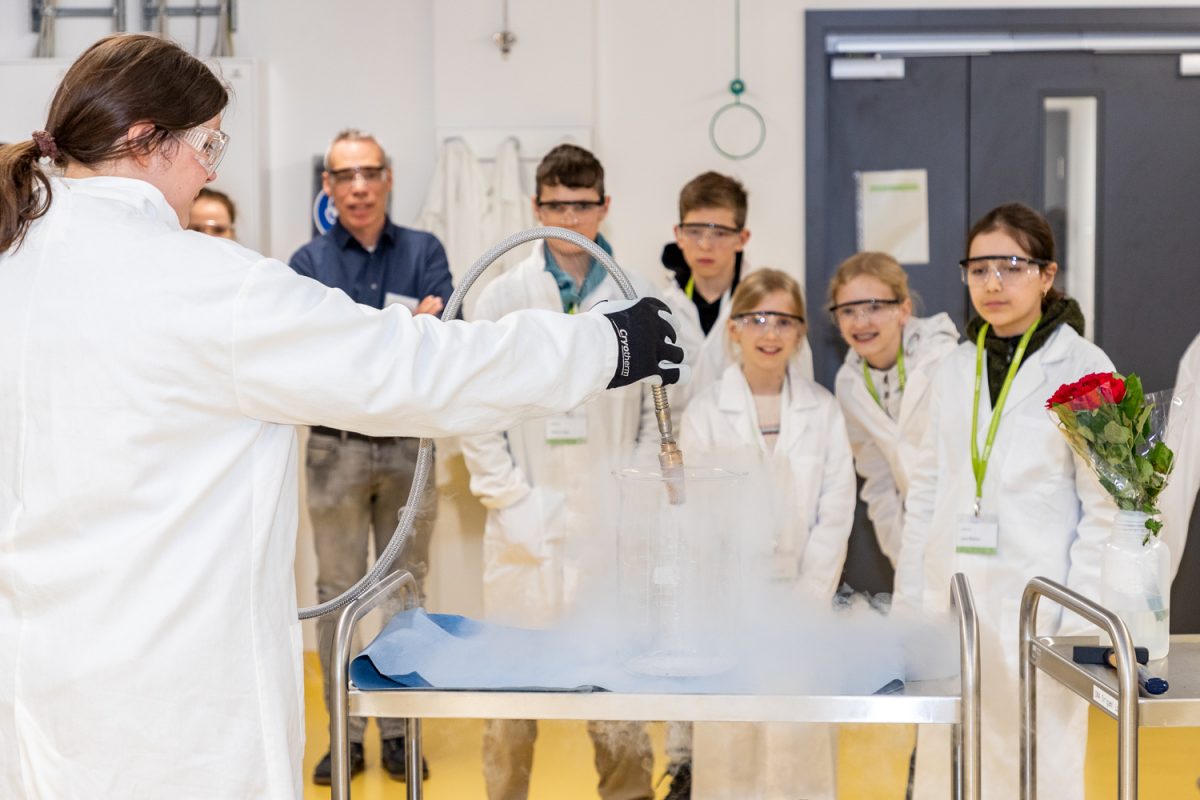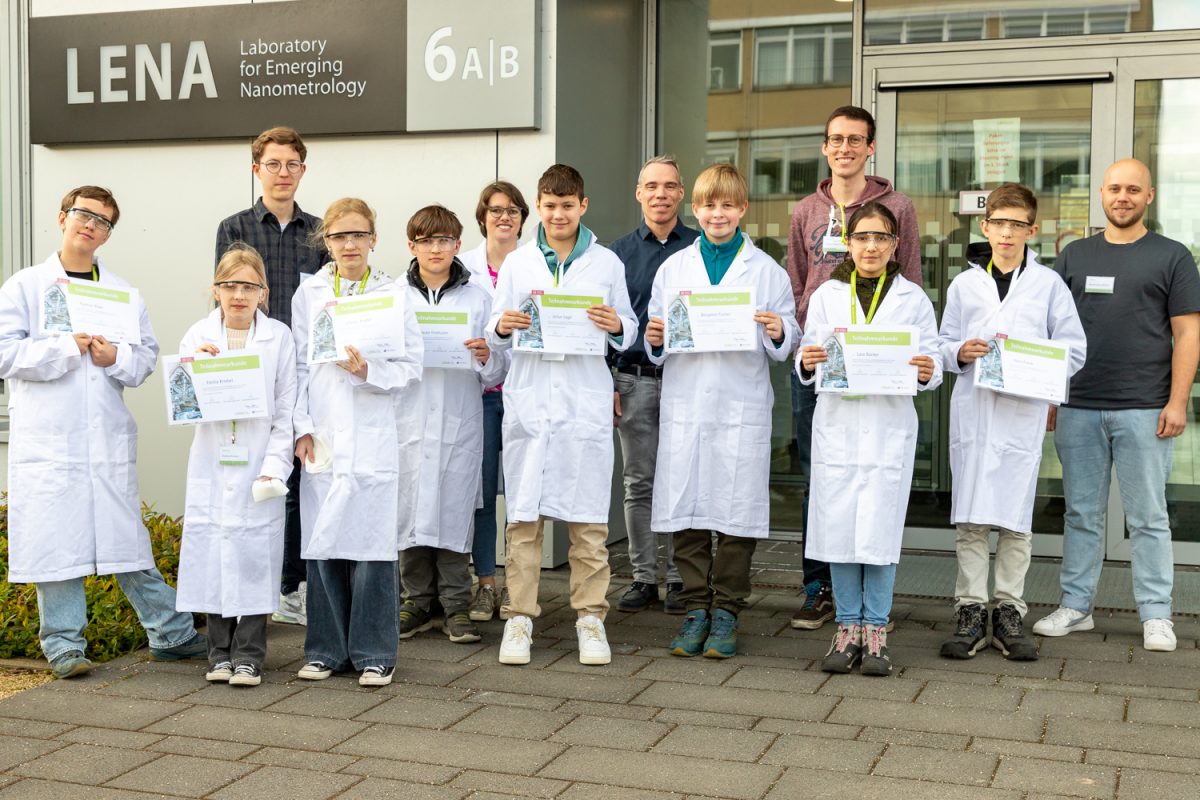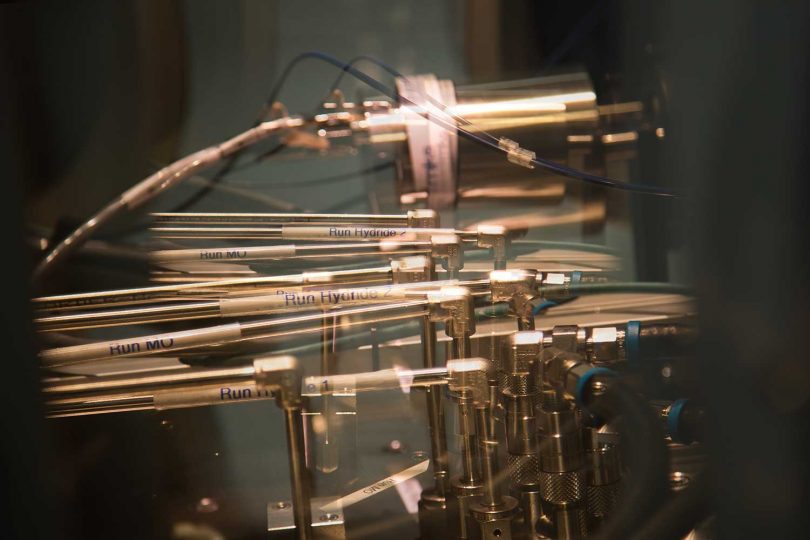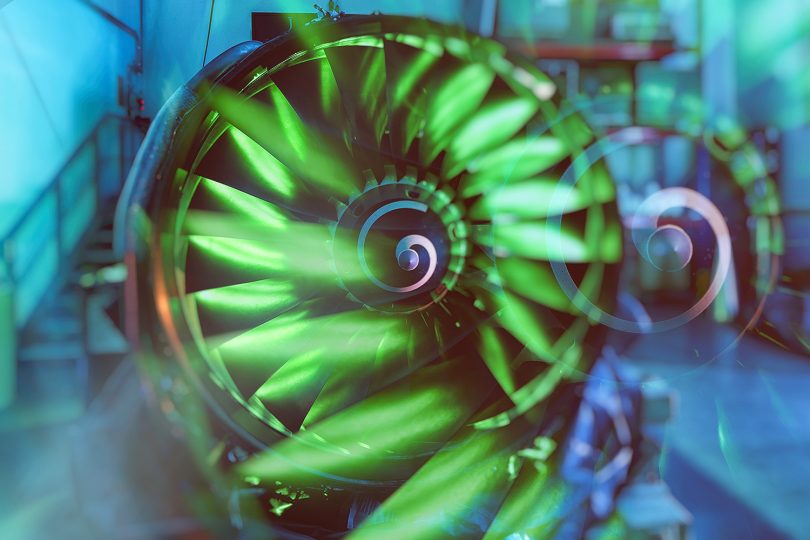Stereotypes turned upside down Zukunftstag 2024 (Future Day) at TU Braunschweig
When the institutes and laboratories at TU Braunschweig are lit up by curious young faces exploring the world of science, one thing is clear: it’s Future Day. It’s a day that not only opens doors to exciting careers, but also turns stereotypes of “girls’ jobs” and “boys’ jobs” upside down. On 25 April, this year’s nationwide Future Day, TU Braunschweig experienced an influx of pupils eager to discover the unknown for themselves. Many institutes offered exciting experiments. We accompanied schoolgirls to activities organised by the Clusters of Excellence Sustainable and Energy-Efficient Aviation (SE²A) and QuantumFrontiers as well as the Automotive Research Centre Niedersachsen.
The high level of safety in aviation is no coincidence, but the result of intensive research and development. The fact that every detail of an aircraft is designed to protect passengers and crew was demonstrated to the pupils at the Institute of Aircraft Design and Lightweight Structures at the Research Airport Campus. In the institute’s test hall, they were able to see the structure of an aircraft up close and understand how engineers ensure safety in aircraft construction. They learned how material selection, design principles and safety systems work together to ensure maximum safety on every flight.
Experiments with an egg as a “passenger”
Then it got practical: the girls became constructors themselves. Using craft materials, they had to wrap a fragile egg – the little “passenger” – in such a way that it would survive a fall from a height of ten metres. Creative constructions such as nested tubes and delicate baskets with parachutes were created. And then the exciting moment: did the egg survive the impact intact? Even if one or two of the “passengers” cracked, the girls quickly realised that these processes and experiences are part and parcel of being an engineer: developing, testing, evaluating, optimising and, above all, persevering!
Flight in the cockpit simulator
Cockpit instead of classroom, landing an Airbus A320 in San Francisco instead of swotting up on vocabulary. At the Institute of Flight Guidance (IFF), the flight in the cockpit simulator was the absolute highlight. The pupils also learned that as well as transporting people and goods and connecting continents and people, aviation has a responsibility to reduce the climate impact of flying. Scientists at the IFF are taking up this challenge and explained to the pupils how their research is working to reduce emissions and develop sustainable technologies.
Insights into the world of the tiniest
At LENA, the Laboratory for Emerging Nanometrology, the Future Day gave pupils an insight into the world of nano and quantum. Just like the scientists, there was a mandatory safety briefing before heading into the laboratories. There, the pupils in grades 5-7 discovered various types of microscopy – from pocket-sized lensless LED microscopes to the world’s most precise microscopes.
The pupils were even able to examine their own hair at an unimagined size using one of these super microscopes, which are normally used by scientists at the QuantumFrontiers Cluster of Excellence to work at the limits of what can be measured.
To illustrate what is behind technical terms such as “atomic force microscope”, the researchers have built a functional Lego model. Just as the Lego tip scans a surface, a tip in a real atomic force microscope scans a surface sample – but with nanometre precision.
Low temperatures with a eureka moment
Equipped with lab coats and safety glasses, the pupils also investigated the effects of the cryogenic temperatures of liquid nitrogen. Nitrogen is normally used to cool sensitive experiments at LENA, but it can also be used to experiment with everyday objects. On Future Day, the pupils were amazed to see what liquid nitrogen does to fruit and balloons, for example. They were amazed when a balloon, which had been cooled in a nitrogen bath until only its shrunken plastic casing remained, re-inflated to its original shape and size as soon as it was removed from the nitrogen.
Sustainable mobility
Maximum concentration in the laboratory of the Institute of Ecological and Sustainable Chemistry at the Automotive Research Centre Niedersachsen (NFF): equipped with lab coats, safety glasses and protective gloves, the pupils immersed themselves in the fascinating world of chemistry and learned how complex mixtures can be broken down into their individual components: From paper chromatography, where they could see with their own eyes how dye mixtures separate into their components on a strip of paper, to state-of-the-art gas chromatography, which reveals even the smallest differences in chemical samples. The Institute’s research and teaching is dedicated to sustainable development in the fields of environment and technology. The topic of sustainability in particular stayed with the pupils, as was later revealed at the closing event: When asked what mobility should look like in the future, “efficient” and “climate-friendly” were at the top of the list.
Pupils demonstrate technical skills
Fast car, powerful engine – who would you expect to find in the workshop? That’s right: girls working on engines, determinedly grabbing their tools and dismantling the engine into its component parts – oil-smeared hands included. None of the pupils were bothered by this, their eyes were fixed on the crankshaft, which transforms the up and down movement of the piston into a rotary motion – clearly explained by two research associates from the Institute of Internal Combustion Engines and Fuel Cells (ivb) at the NFF.
Technical skills and engineering knowledge were also demonstrated by the schoolgirls who, in another room, set up a hydrogen fuel cell to generate electricity. Under expert guidance, they connected the hydrogen storage tank, pressure reducer, electric motor, cable and fuel cell to generate electricity. None of the participants were put off by the two pages of instructions. On the contrary, once they were fully immersed in the experiment, time flew. What remains is the realisation that technology undoubtedly also belongs in girls’ hands.

